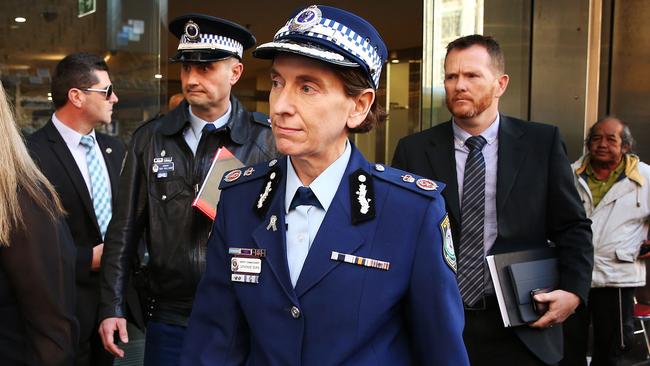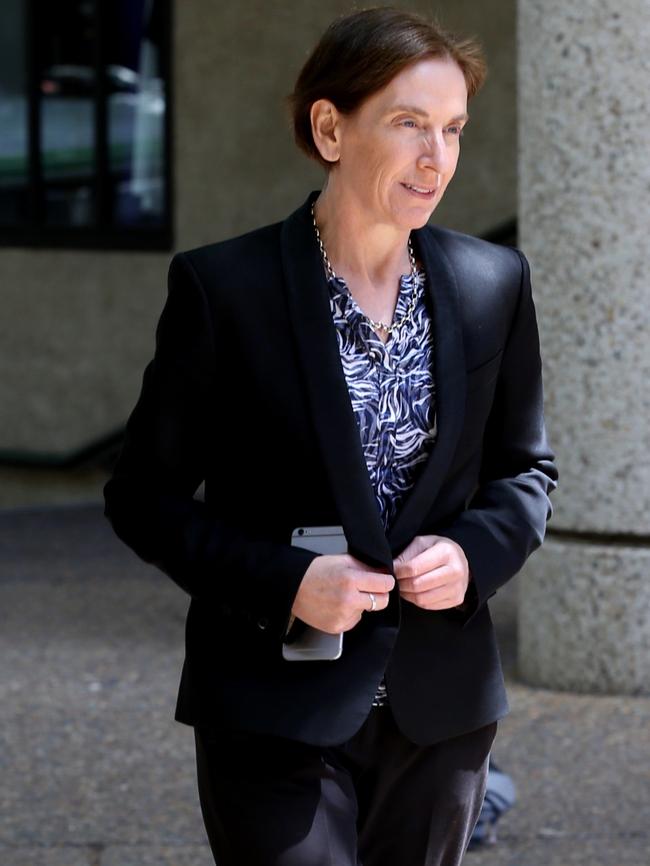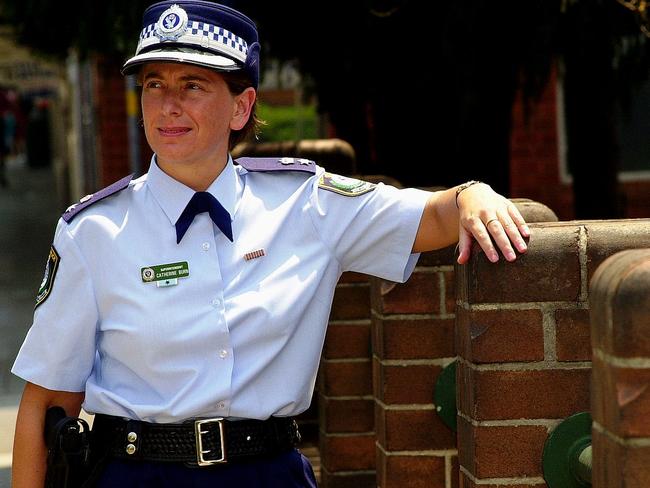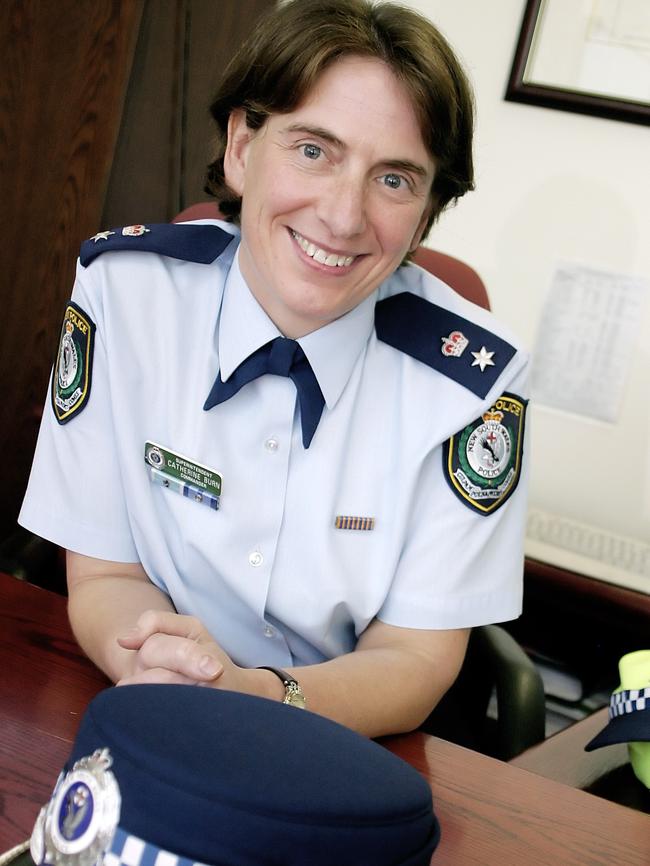Police Deputy Commissioner Cath Burn releases statement regarding ‘Operation Prospect’ report
NSW Police Deputy Commissioner Catherine Burn has released a public statement in the wake of the release into the ‘Operation Prospect’ report. READ IT IN FULL.

NSW
Don't miss out on the headlines from NSW. Followed categories will be added to My News.
NSW POLICE DEPUTY COMMISSIONER CATH BURN:
“I MAKE this statement in response to the publication by the Acting Ombudsman, Professor John McMillan (the Ombudsman), of a report on the conclusion of the long-running investigation known as ‘Operation Prospect’.
Under section 17 of the Ombudsman Act, the inquiry has been conducted in private. Witnesses and affected parties have been subjected to strict non-disclosure obligations, to the point that it has not even been possible, before today, for me to confirm publicly that I had been called to give evidence. The decision of the Ombudsman to finalise his investigation with a single report issued under the special power to report to Parliament, has meant that I have only received notice of the Ombudsman’s comments and recommendations about my conduct at the time of publication of his report widely today.

It remains unclear to me whether the secrecy provisions applying to New South Wales Crime Commission investigations and the non-disclosure orders made by the Ombudsman in the course of Operation Prospect continue to place limits on what I can say publicly. Further, I have not had an opportunity to review the report in detail so a comprehensive response is neither possible nor appropriate at this time. However, in all of the circumstances of this matter I feel that it is necessary that I make a few things completely clear.
At the outset, it must be accepted that the secrecy of the Ombudsman’s inquiry was compromised both by the unauthorised disclosure of underlying documents to the media and through the conduct of the Select Committee into the Conduct and Progress of Operation Prospect by the New South Wales Legislative Council (Select Committee) which reported its conclusions in February 2015.
As a consequence, over many years I have been the subject of flagrant and unsubstantiated accusations of dishonest and corrupt conduct in connection with my role as team leader of the Mascot investigations. Secrecy constraints placed me in the invidious position of being completely unable to correct the record and protect my reputation from continual and malicious attacks as part of a campaign to damage my reputation. I am pleased that the Ombudsman’s report has exonerated me in respect of these serious allegations. They were always agenda-driven and entirely without foundation. I have never sanctioned, authorised or pursued illegal tapping of police officers.
However, the Ombudsman’s report includes several findings about the performance of my role whilst serving as the team leader of Mascot and for the record I reject these findings. The criticisms that have been made of my conduct fail to appreciate that in such investigations police are required to form an honest and reasonable suspicion that an individual may have been involved in corrupt conduct. It is unreasonable for the Ombudsman to form any view that second-guesses the reasonableness of the view held by me and the rest of the Mascot team at that time, particularly this long, 17 years, after the event and based on the resulting unreliable recollections of witnesses and the ambiguities arising from the documents.

The Ombudsman’s report also includes findings concerning my role in relation to a NSWCC informer who was code-named ‘Paddle’. While it is clear that when Paddle was deployed by Mascot on two occasions in May 1999 the effect was that he breached certain bail conditions. I was not Paddle’s handler, I had no knowledge of his bail conditions and it was not my responsibility to check them. This was an instance in which I relied on subordinate staff and NSWCC staff to carry out the delegated work competently which was proper and reasonable in all of the circumstances.
I reject absolutely the suggestion that I may have engaged in any unreasonable, let alone unlawful, conduct in connection with this matter. The Ombudsman explicitly found that there was no evidence that any failure on my part to act appropriately was deliberate or intentional, just the result of “neglectful oversight”. The finding that my conduct was unlawful in no way suggests that I was guilty of a criminal offence.
The Mascot investigations must be understood in their historical context. This was a corruption probe that commenced in the aftermath of the Wood Royal Commission, which had found systemic and entrenched police corruption in the New South Wales Police Force in the 1990s. When an informant named many police and civilians as being involved in corruption, his allegations needed to be fully investigated if the reforms recommended by the Wood Royal Commission were to be effective in rooting out and prosecuting corruption. It is against the backdrop of the unprecedented opportunity presented by the informant’s willingness to gather further evidence that the scale and extent of Mascot’s surveillance of serving police officers should be understood.

It must be remembered what was at stake at the time and what Mascot achieved. There was ongoing, serious corruption infecting the force, and as a direct result of Mascot, corrupt police officers were investigated and ultimately convicted of major crimes, receiving substantial custodial sentences.
It should be acknowledged that for all of us serving on the Mascot operation we were working under extremely stressful, dangerous and isolating conditions. This took its toll on all of the officers who were simply trying to do their best. We were not allowed to talk to anyone about what we were doing, including families and colleagues and, incredibly, for over two years, the secrecy of the covert operation was maintained. This is a testament to the officers involved.
This is not to say that mistakes were not made, or to seek to excuse them on the basis that the ends justify the means. Let me be clear: I acknowledge that there were failures during the Mascot investigation. I acknowledge that certain things were not done as well as they could have been, particularly compared with today’s standards — some 16 to 17 years later.
Apart from the deficiencies in the systems and processes that were in place at the NSWCC at the time of the Mascot investigation, I also observe that the covert, fast-paced and dangerous nature of investigation made it impossible for mistakes to be avoided altogether. The improvement of the processes governing covert police operations may have improved significantly in the last 17 years, but it is impractical and unrealistic to hold police to a standard of perfection in the circumstances of investigations. To the extent that the Ombudsman’s report rules police conduct as ‘unreasonable’ due to a failure to have total visibility over every detail of complex, covert operations at all times, it should not be permitted to form any kind of precedent.
Police officers must act ethically and with due diligence, but also with the necessary speed and agility to outflank perpetrators of major crimes, particularly if they are operating within the police. If police officers fear taking action without perfect certainty lest their careers be damaged, we will inevitably embed a slow-moving, cumbersome and ineffective police culture and ultimately see the re-emergence of systemic corruption within the NSWPF.
While mistakes occurred at Mascot, I can say with complete confidence that, at all times, I performed my role conscientiously, ethically, honestly and in accordance with my oath of office, statement of values and the law.
I am confident in making the claim that over the past 20 years the culture of our police force has been transformed and I am proud of the role I have played. We have better recruitment policies, greater diversity, best-practice governance arrangements and have incorporated high ethical standards into our DNA. We continue to achieve outstanding results. Serious crime is down and confidence in the NSWPF continues to increase. The community of New South Wales can continue to have confidence in the men and women of the NSWPF.
I remain committed to serving the people of New South Wales, particularly in tackling the resurgent challenge of terrorism and organised crime in our state and working with my colleagues to help ensure that the re-emergence of corruption within our police force does not impede those efforts.”


